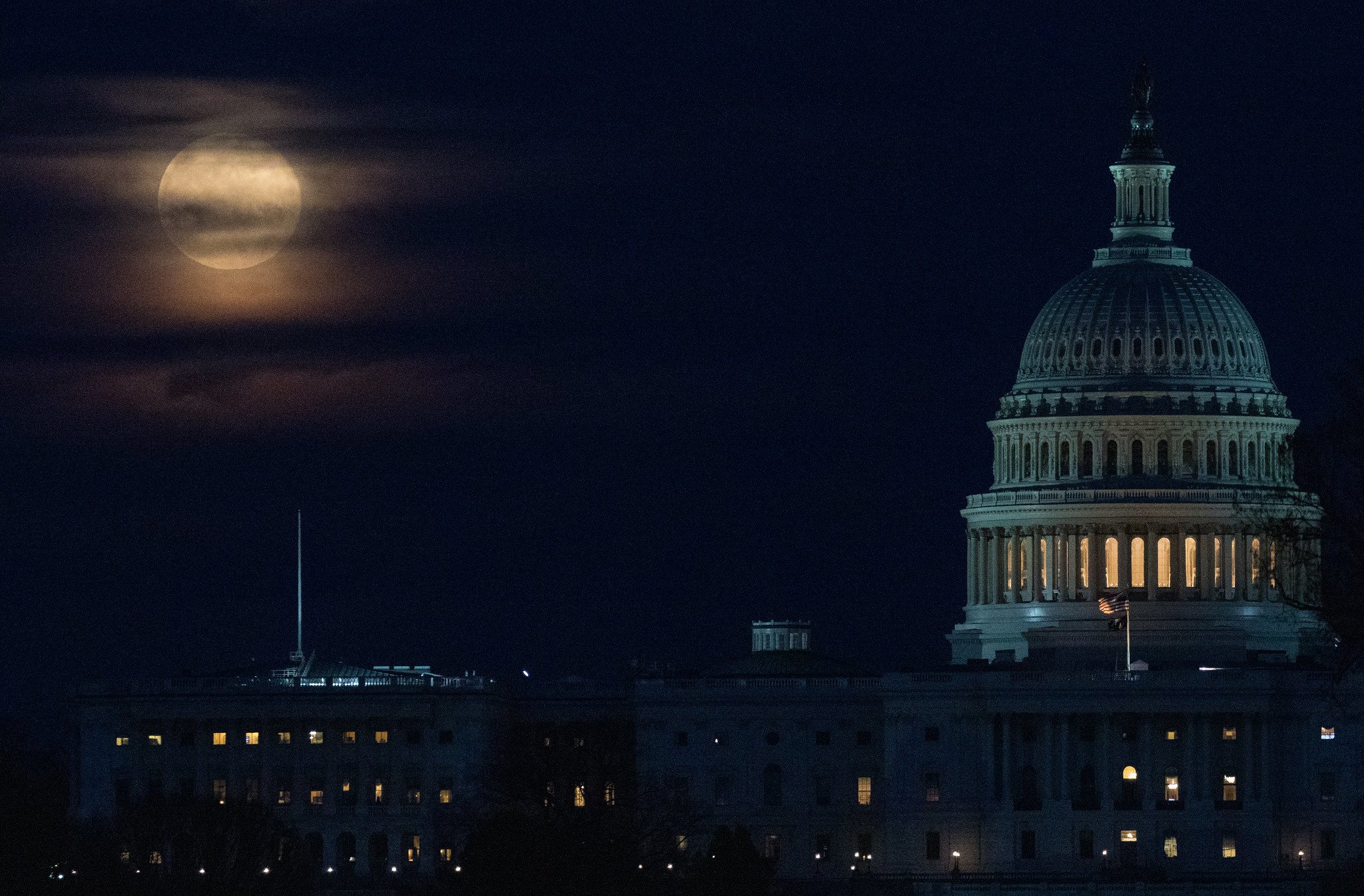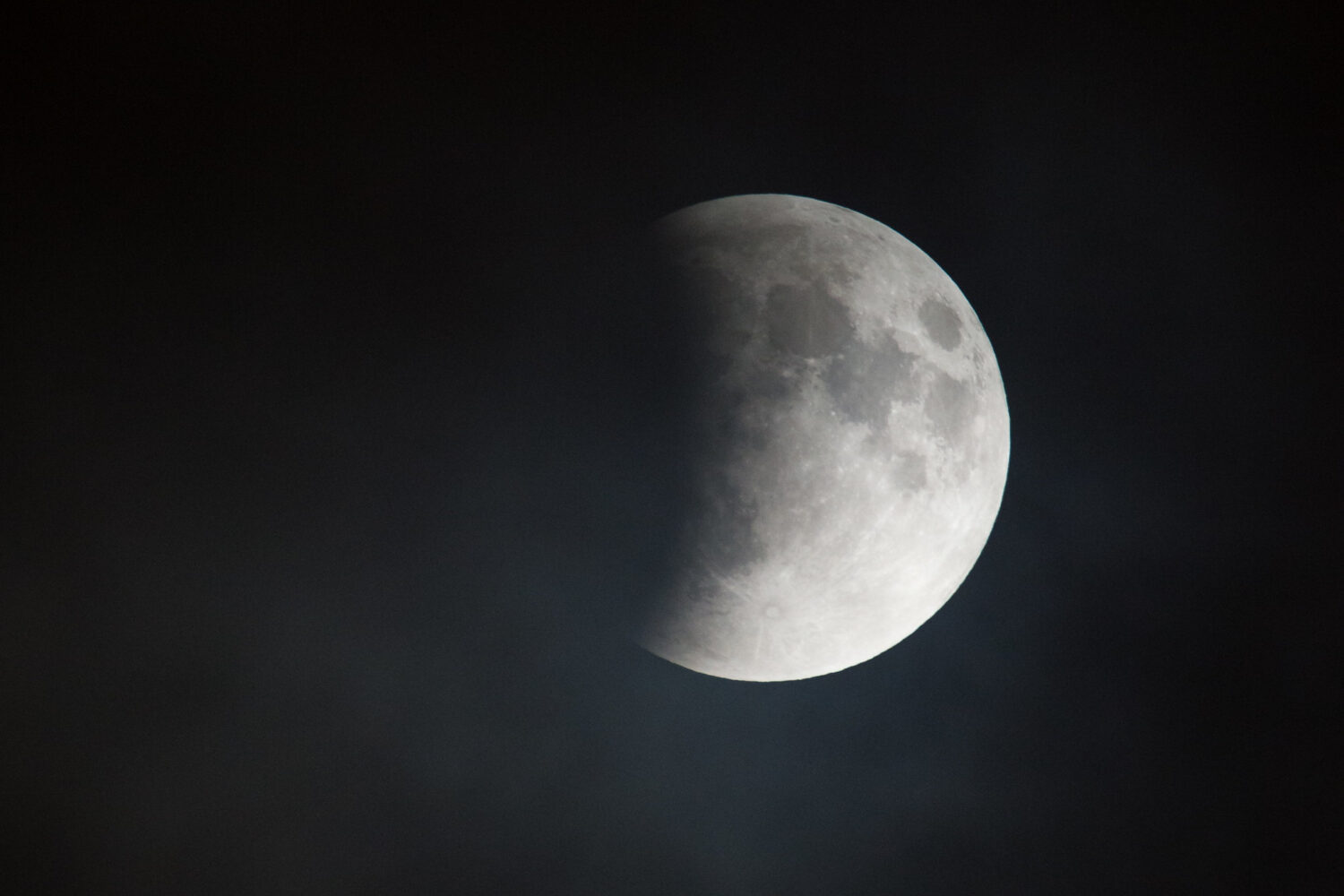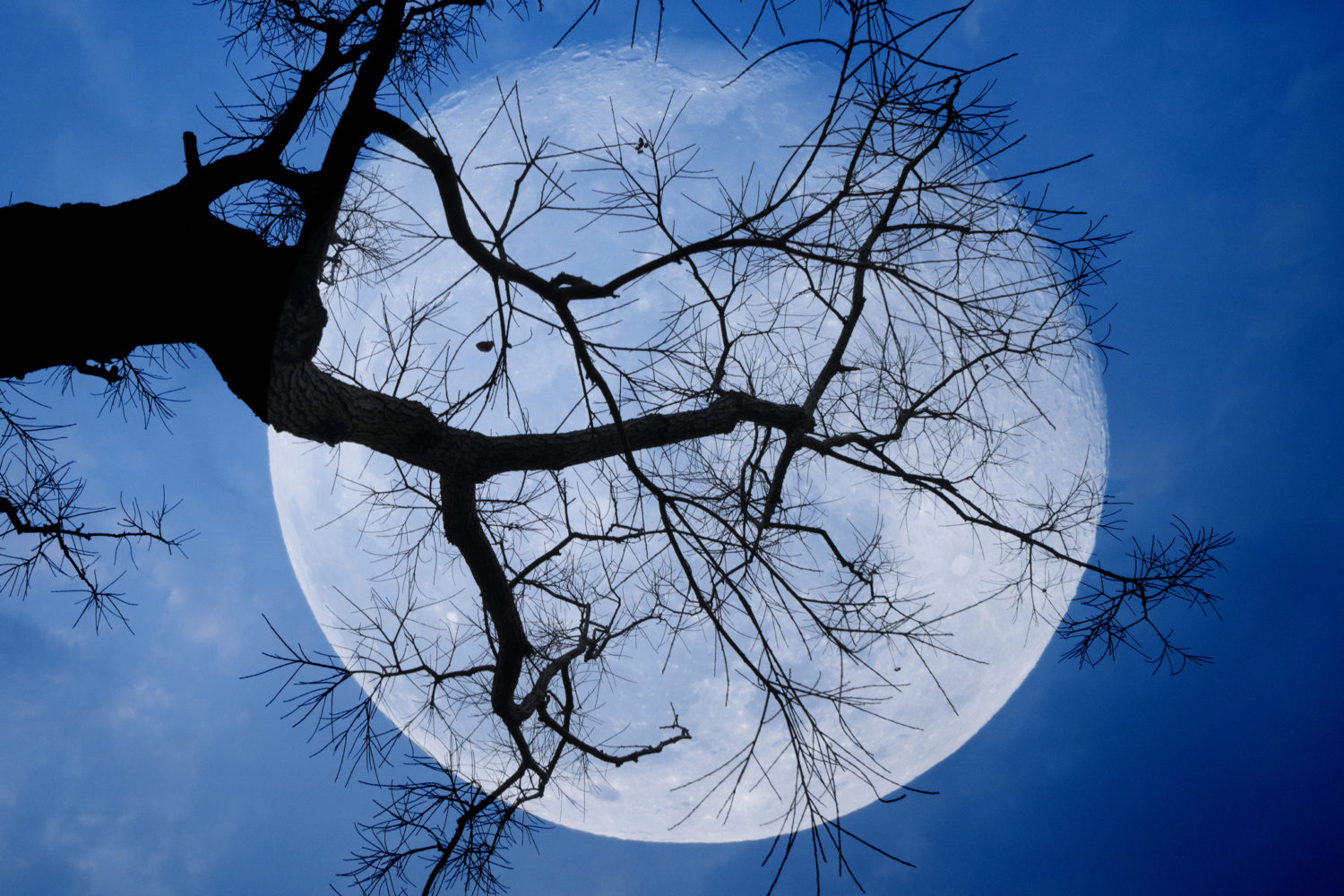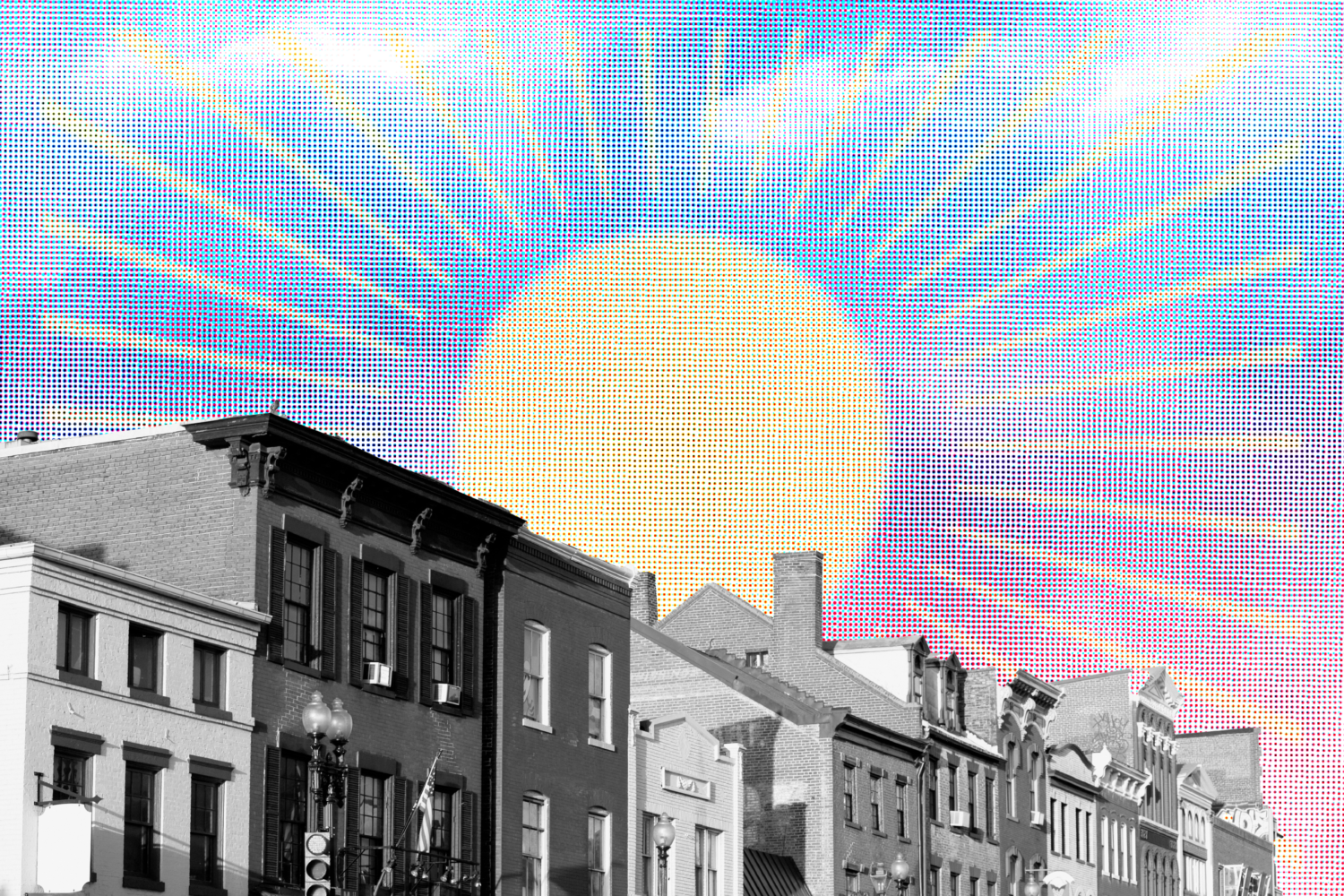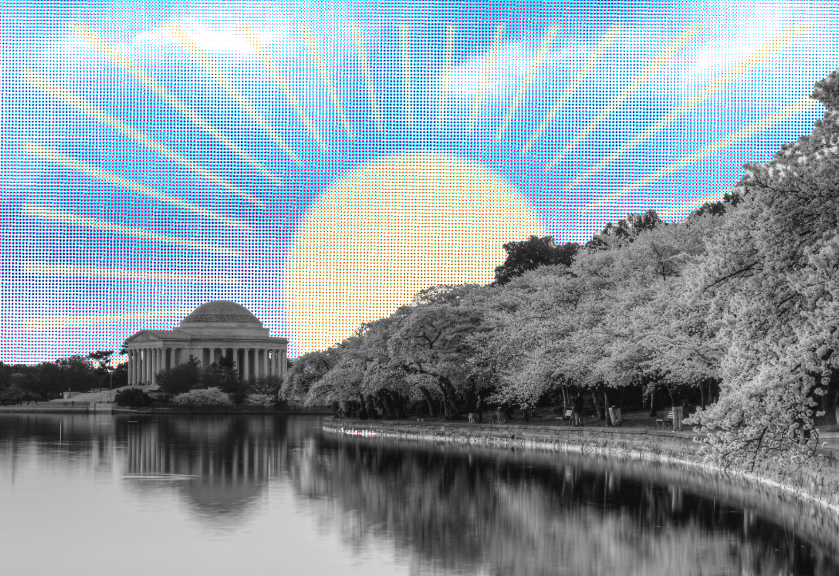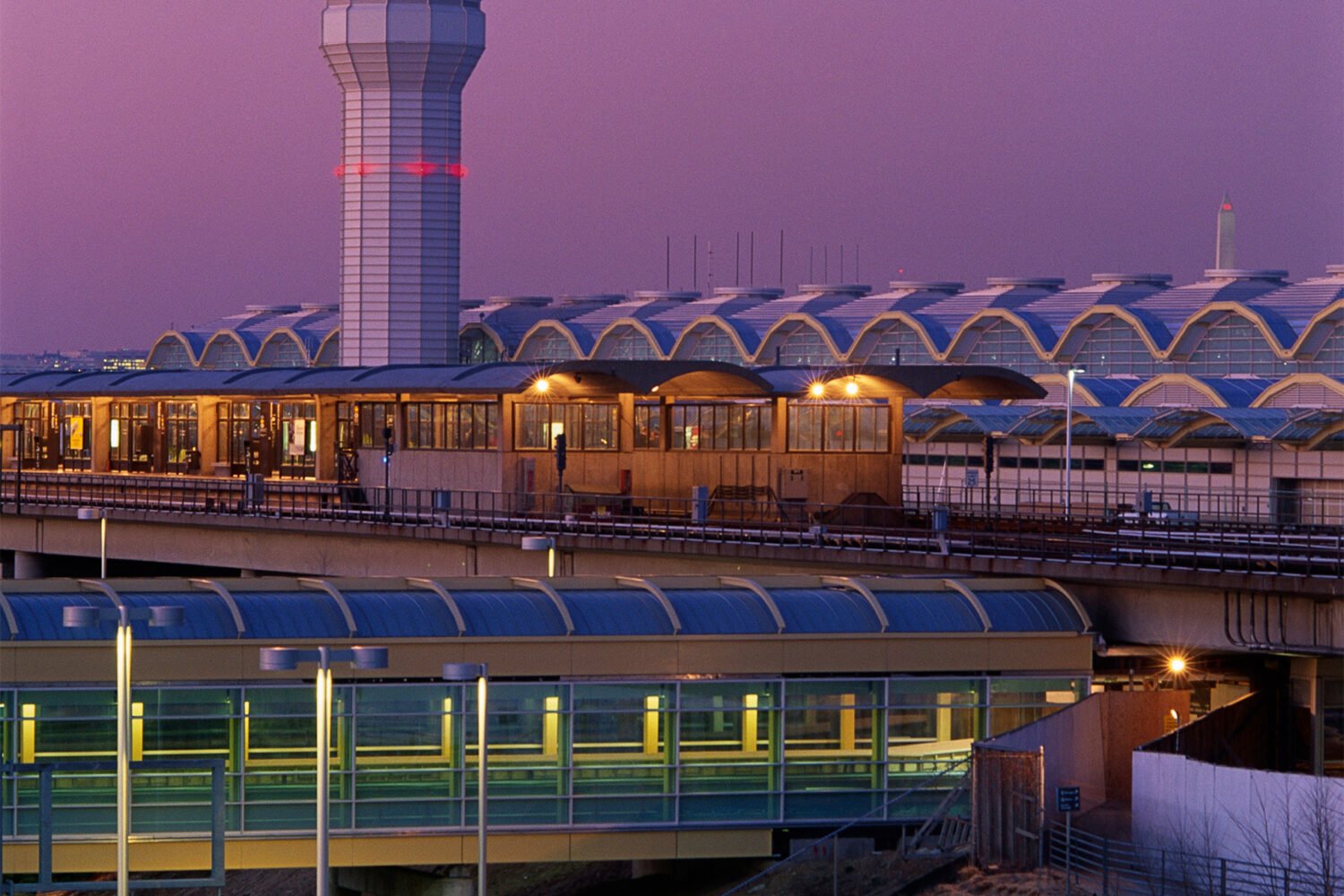Astronomy fans are in for a treat this week: from Monday afternoon through early Wednesday morning the moon will look slightly bigger and brighter than usual because it’s at the point in its orbit where it’s closest to Earth. That’s typically known as a “supermoon,” but thanks to a quirk in the calendar, this one will be a “super blue moon.” That’s because tonight’s full moon is a seasonal blue moon, which means it’s the third full moon in an astronomical season (three calendar months) with four full moons.
Shauna Edson, astronomy educator at the Smithsonian Air and Space Museum, says there’s nothing too special about this moon, besides its slightly larger size and its place in the calendar.
“It’s just an accident of how the moon cycle overlaps with our calendar,” Edson says. “It has nothing to do with the color of the moon or how it appears.”
Unfortunately for DC-area residents, tonight’s clouds and potential storms may make it hard to see much of the moon. But tomorrow, when it’s clearer, Edson recommends going out around 9 PM and looking east, opposite of the sunset, to spot the big moon. Tuesday night is also a good time for moon-gazing because you’ll be able to see the planet Saturn next to the moon. It’s one of the five planets we can see with the naked eye. If you don’t want to stay out past dark to see the moon rise, you might be able to see it in the morning throughout the next week since the moon sets about 40 minutes later each day (although it will be changing phases more visibly).
This kind of event happens once every few years, Edson says. The next monthly blue moon will be in two years, on May 31, 2026, and the next seasonal blue moon won’t be until May 20, 2027.
Correction: A previous version of this story said incorrectly that this supermoon was a monthly and seasonal blue moon. It is only a seasonal blue moon.

